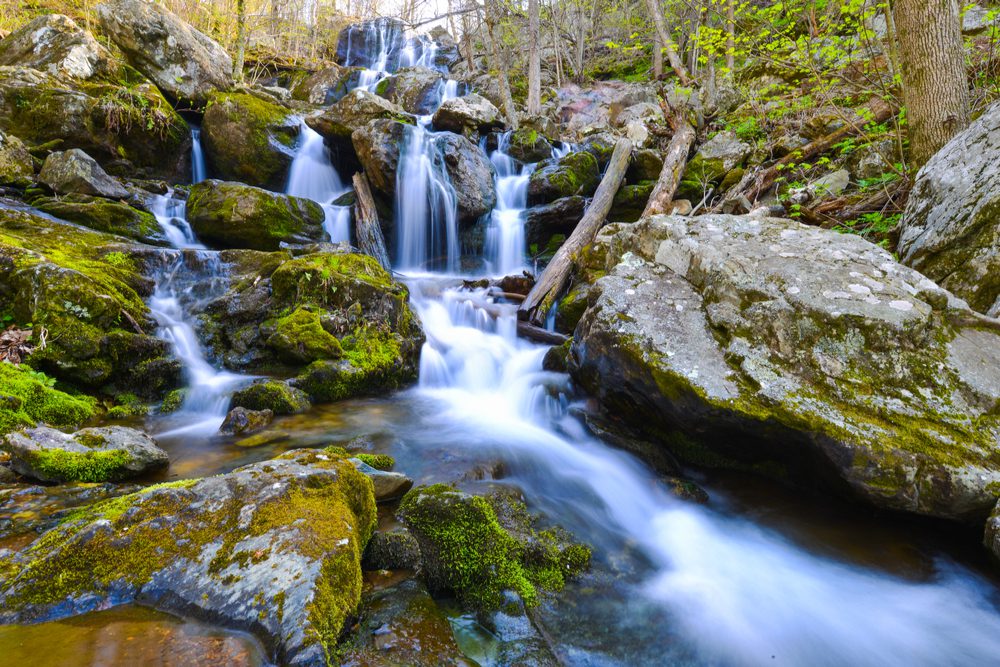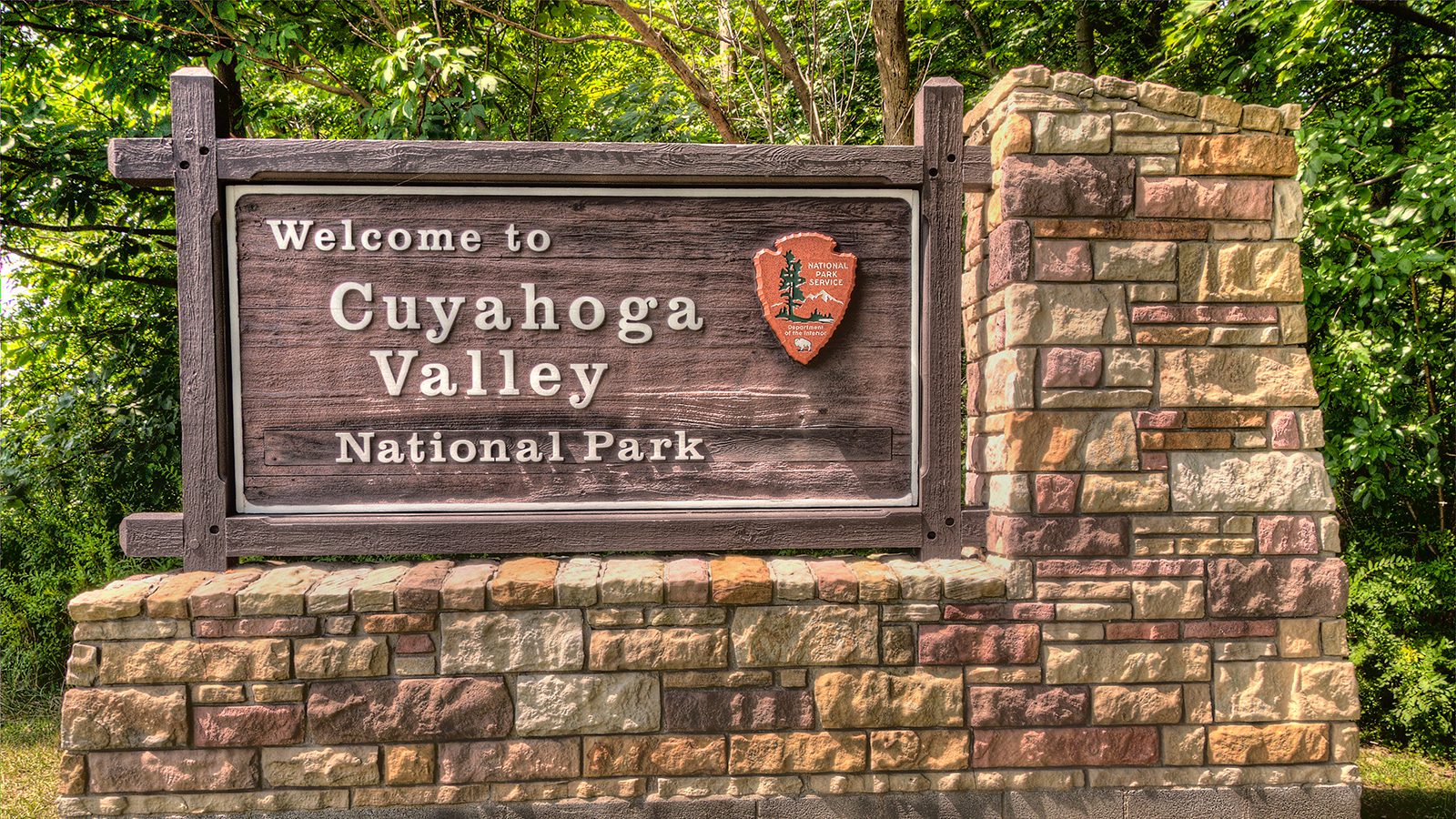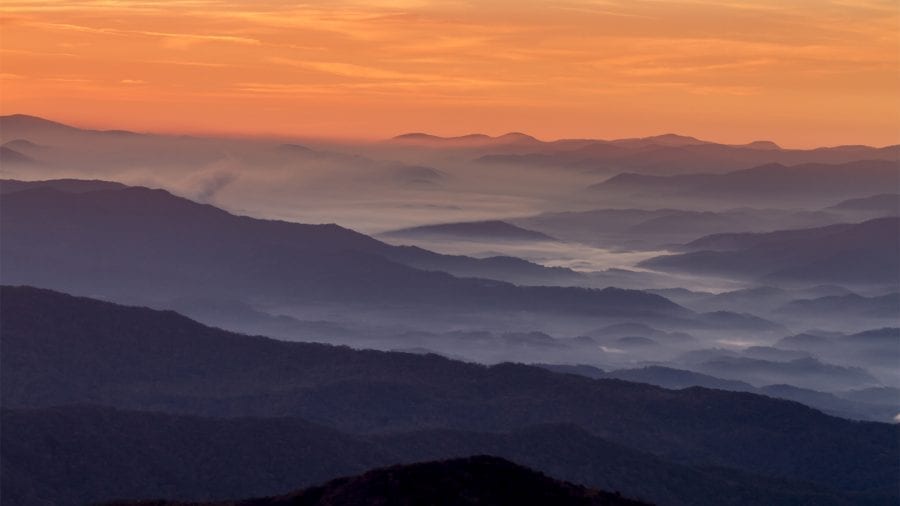
Here are some quick facts about Greak Smoky National Park.
- Established : 1890
- Land Size : 522,427 acres
- Annual Visitors : 11 million
- State : North Carolina / Tennessee
- Entrance Fees : None
More Reading :
Page Contents
Where is Great Smoky Mountains National Park?
Great Smoky Mountains National Park straddles the border between Tennessee and North Carolina.
The cities of Gatlinburg and Pigeon Forge in Tennessee are considered the gateways to the park on the North Side with Cherokee and Bryson City, North Carolina serving as the largest cities on the southern side. Larger cities Asheville, NC, and Knoxville, Tennessee are located about an hour from the park.
What is the Smokies Famous for?
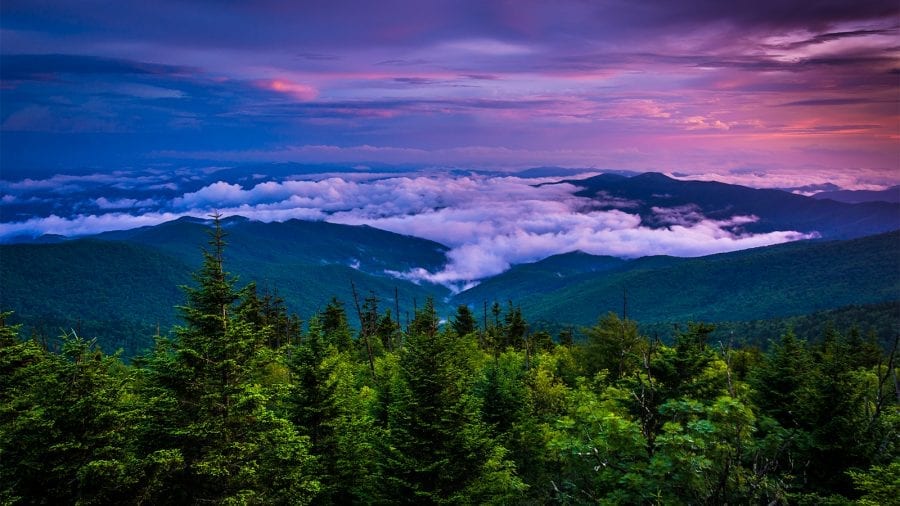
Aside from being one of the only national parks that do not charge an entrance fee, Great Smoky Mountains National Park, also known as the Smokies, is known for its impressive waterfalls as well as its diverse collection of flora and fauna.
The Smokies feature several notable peaks. Clingman’s Dome, the highest point in the park, is one its most popular destinations. Nearly 900 hiking trails offer strenuous climbs and beautiful walks through nature with historical attractions in the form of old homesteads from long-ago residents.
What is the best month to visit the Smokies?
Although the summer months are extremely popular in Great Smoky Mountains National Park, October presents perhaps the best month to visit.
The arrival of autumn brings with it tremendous fall colors. The park features more than 100 species of trees, many of which put on a tremendous display of reds, oranges, and yellows in the fall, which can be best viewed by hiking or by car.
October also presents optimal weather conditions with the summer heat replaced by temperate highs in the 70s with mainly dry conditions. Just keep in mind that this is one of the busiest times of the year at the park, so reserve lodging well ahead.
What to do in Great Smoky National Park?
How many days do I need in the Smokies?
Three days (short trip)
For those who only have a long weekend to spend, hit some of the highlights of Great Smoky Mountains National Park. For scenic highlights, complete a circuit that includes some of the Smokies’ top destinations.
This includes Newfound Gap, the lowest mountain pass in the park, Chimney Tops, a popular hiking trail that features amazing views, and Clingmans Dome, which features a 360º viewing tower. Also, check out some of the park’s most beautiful waterfalls: Abrams Falls and Grotto Falls.
Seven days (long trip)
With a full week to spend, you have time to make the most of the natural and historical sights in the area. In addition to the above attractions, be sure to visit the Sugarlands Visitors Center, which offers numerous natural history exhibits.
For more history, head to the Mountain Farm Museum near Cherokee, North Carolina. Take a day to visit Roaring Fork and make a short hike to visit 80-foot Rainbow Falls or a longer one to see Baskin Falls.
Other attractions include Cataloochee,which at one time was the largest settlement inside the park, and Cades Cove, which features an old mountain settlement and several waterfalls.
You also have time to explore Fontana Lake, a 29-mile long mountain lake by renting a boat or kayak.
How to get to the Smoky Mountains?
Flights
You have a few options when it comes to flying into Great Smoky Mountain National Park.
Knoxville and Asheville present the closest airports. Asheville is located about an hour east of the park while Knoxville is about an hour north. Both airports are small and easy to get in and out of, making for low-stress travel.
- McGhee Tyson Airport (TYS) is located about 12 miles south of Knoxville and is the closest airport to park at about an hour’s drive or roughly 40 miles from the Gatlinburg park entrance. This is the best option if your trip focuses on the park’s Tennessee attractions, including Cades Cove, Mt. LeConte, and Pigeon Forge. This regional airport is served by several major airlines including American, United, and Delta, with service to such major cities as Chicago, Boston, Dallas-Fort Worth, Atlanta, and Philadelphia. Rental car options include Avis, Alamo, Budget, Hertz, Enterprise, National, Dollar, and Payless.
- Asheville Regional Airport (AVL) is the closest airport to the North Carolina side of the park, located about 40 miles east, or about an hour’s drive from the park entrance in Cherokee. It’s the best option if your trip focuses on the park’s eastern side, which includes Catalochee, Clingman’s Dome, and Fontana Lake. Asheville Regional is served by several major airlines including Delta, Allegiant, United, and American with direct flights from major metropolitan areas Washington D.C., Charlotte, Dallas-Ft. Worth, Atlanta, and Chicago. There are many rental car options available including Avis, Budget, Enterprise, Hertz, Alamo, and Dollar.
Drive
There are three main entrances to Great Smoky National Park; Gatlinburg and Townsend, which are both located on the Tennessee side, and Cherokee, which is located on the North Carolina side.
Depending on which direction you’re coming from, several highways will get you to one of these entrances.
- From Knoxville, Townsend is the closest. Entrance. Take U.S. Highway 29 south to Alcoa/Maryville. At Maryville, take US 321 North/ Tennessee highway 73 East through Townsend and into the park.
- From Gatlinburg, take Interstate 40 to state road 66 south. In Sevierville, continue straight onto US 441 south. Follow US 441 through Pigeon Forge and into the park.
- From Asheville, take Interstate 40 west to exit 27 / US-74 West/US-441 North. Follow US-441 through Cherokee to the park entrance.
What to see in the Smokies?
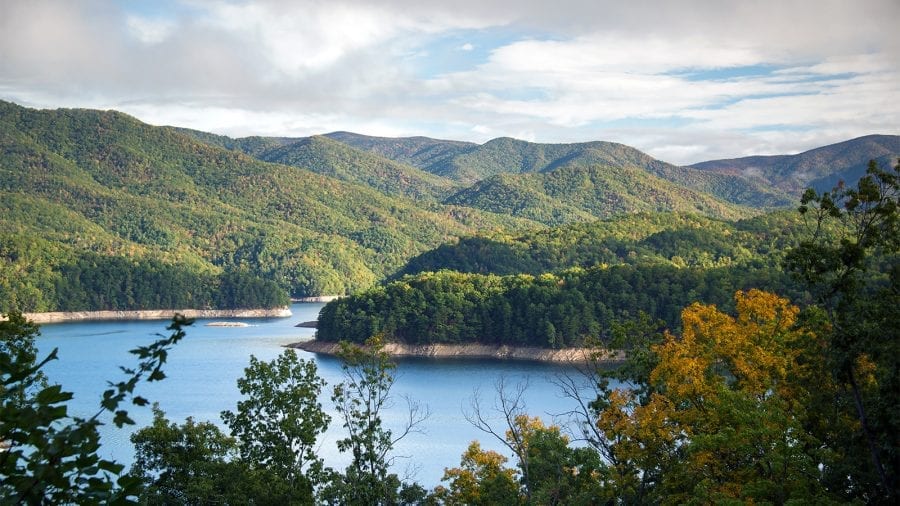
Fontana Lake
Fontana Lake is a large natural reservoir on the southern border of the park. It was formed by a dam built in the 1940s. The Dam itself is worth visiting (you can walk or drive across it). At 480 feet tall, it’s the highest dam east of the Rockies.
With nearly 250 miles of shoreline, It’s an excellent place to boat, kayak or paddleboard. Rent a boat in Fontana Village or from Nantahala Outdoor Center for a day trip. It also offers excellent fishing with plenty of smallmouth and largemouth bass.
If multi-day backpacking trips are your thing, this is an excellent starting off point, as it offers access to some of the most remote parts of the park.
Clingman’s Dome
For spectacular views of the surrounding area, it’s tough to beat Clingman’s Dome, which is the third-highest peak east of the Mississippi at 6,643 feet, slightly less than Mt. Mitchell and Mt. Craig in North Carolina.
At the top of the peak is an observation tower that offers a 360-degree view of the surrounding mountains.
In addition to the observation tower, there are several trails that wind around the area, including the Appalachian Trail, which extends to Georgia in one direction and Maine in the other. Just make sure to bring some layers.
Due to the elevation, the temperature is typically 10 to 20 degrees cooler here.
Cades Cove
For a trip backward in time, head to Cades Cove. It features settlements dating back to the early 19th century. Many of these structures are still standing, including a grist mill, log houses, and other structures, many of which can be toured.
Cades Cove also offers numerous natural attractions with black bears, deer, and a host of other wildlife common in the area. Many trails spider throughout including Cades Cove Nature Trail and Rocky Top.
This is also home to popular Abrams falls, which can be reached via a 2.5-mile hike. Cades Cove is one of the more popular destinations in the Smokies, so plan on going at an off-peak time if possible.
Oconaluftee Indian Village
Oconaluftee Indian Village is located in Cherokee near the North Carolina main entrance to the park. This living history museum portrays life in an 18th century Cherokee Village.
Sign up for an outdoor walking tour of the village, where you’ll see replicas of Cherokee buildings and demonstrations of Cherokee culture, including dance, bead making, basket weaving masks, canoe building and even a blowgun demonstration.
In addition to reconstructed buildings, there’s even an original 19th-century cabin you can visit. Admission is $18.50 for an adult and $10.50 for children. The Village is open from April through the first week of November.
Andrew Bald
There are many amazing hiking trails throughout the Great Smoky Mountains National park, but few have the views offered by Andrews Bald, named for Andres Thompson, who grazed cattle there in the 1840s.
For such a short hike, it’s an easy 3.6 mile round trip, there is a tremendous payoff in the form of incredible 360-degree views of the Smoky Mountains. The trail begins at the Clingman’s Dome parking lot and heads downward to the bald passing through the dense forest of Fraser firs and thickets of raspberry and blueberry patches before opening up into the bald.
Andrew Dodson
Andrew Dodson is an avid camper who enjoys the great outdoors with his wife and two-year-old son. He resides in Colorado, where you can often find him enjoying hikes with a toddler strapped to his back and mini goldendoodle Percy nearby.
